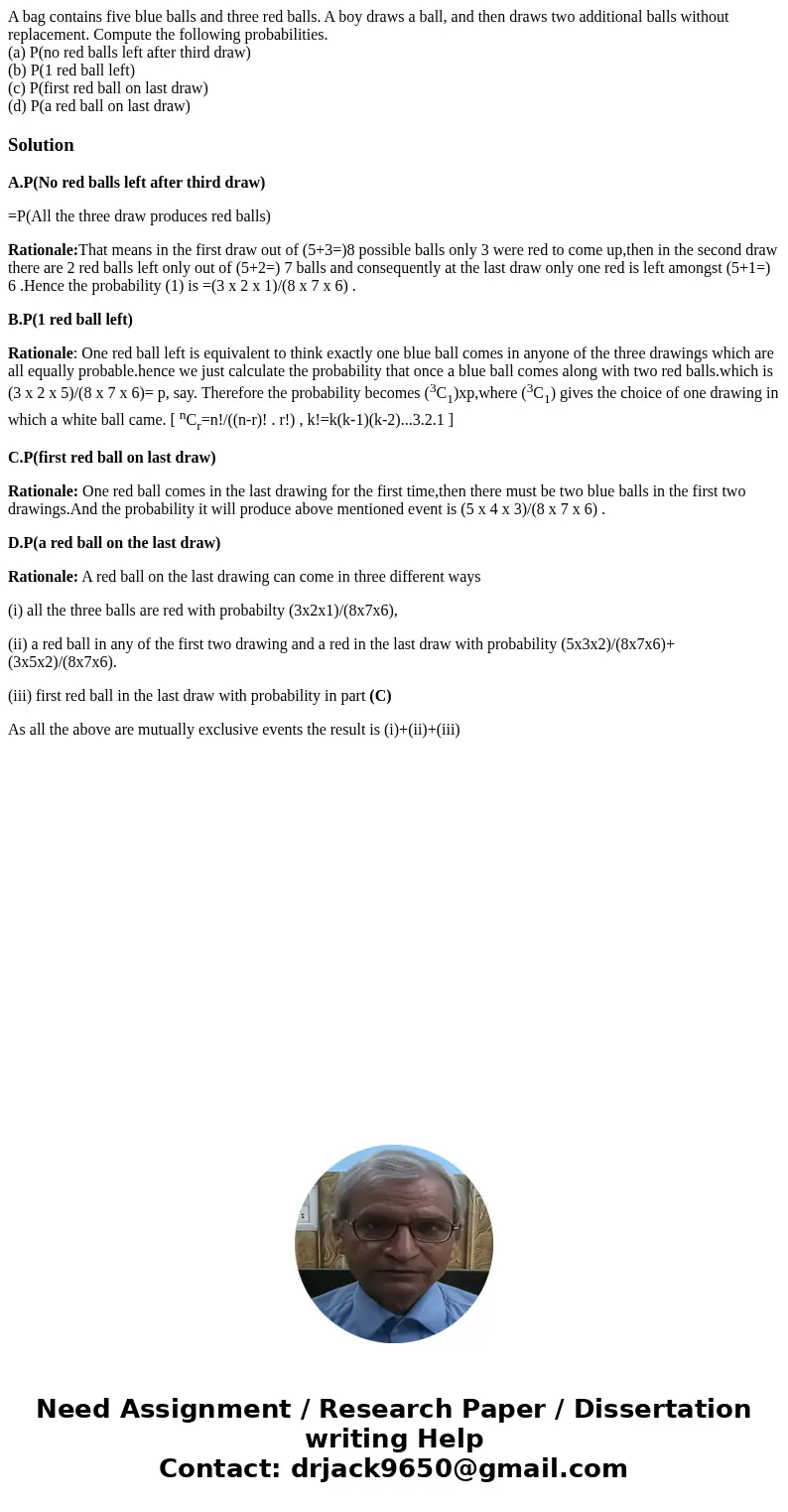A bag contains five blue balls and three red balls A boy dra
A bag contains five blue balls and three red balls. A boy draws a ball, and then draws two additional balls without replacement. Compute the following probabilities.
(a) P(no red balls left after third draw)
(b) P(1 red ball left)
(c) P(first red ball on last draw)
(d) P(a red ball on last draw)
Solution
A.P(No red balls left after third draw)
=P(All the three draw produces red balls)
Rationale:That means in the first draw out of (5+3=)8 possible balls only 3 were red to come up,then in the second draw there are 2 red balls left only out of (5+2=) 7 balls and consequently at the last draw only one red is left amongst (5+1=) 6 .Hence the probability (1) is =(3 x 2 x 1)/(8 x 7 x 6) .
B.P(1 red ball left)
Rationale: One red ball left is equivalent to think exactly one blue ball comes in anyone of the three drawings which are all equally probable.hence we just calculate the probability that once a blue ball comes along with two red balls.which is (3 x 2 x 5)/(8 x 7 x 6)= p, say. Therefore the probability becomes (3C1)xp,where (3C1) gives the choice of one drawing in which a white ball came. [ nCr=n!/((n-r)! . r!) , k!=k(k-1)(k-2)...3.2.1 ]
C.P(first red ball on last draw)
Rationale: One red ball comes in the last drawing for the first time,then there must be two blue balls in the first two drawings.And the probability it will produce above mentioned event is (5 x 4 x 3)/(8 x 7 x 6) .
D.P(a red ball on the last draw)
Rationale: A red ball on the last drawing can come in three different ways
(i) all the three balls are red with probabilty (3x2x1)/(8x7x6),
(ii) a red ball in any of the first two drawing and a red in the last draw with probability (5x3x2)/(8x7x6)+(3x5x2)/(8x7x6).
(iii) first red ball in the last draw with probability in part (C)
As all the above are mutually exclusive events the result is (i)+(ii)+(iii)

 Homework Sourse
Homework Sourse